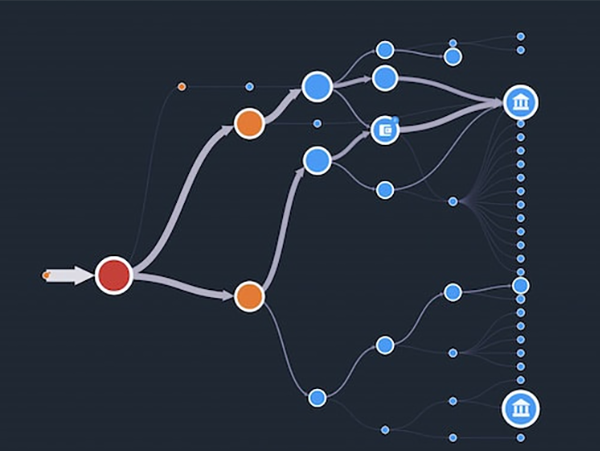How to Learn Crypto Technical Analysis: Step-by-Step for Beginners

Technical analysis is one of the most essential skills for cryptocurrency traders. Unlike fundamental analysis which looks at project teams and real-world utility, technical analysis (TA) focuses purely on price charts and trading patterns to predict future movements. This comprehensive guide will take you from complete beginner to competent chart analyst through structured, practical steps.
Understanding the Foundations of Technical Analysis
Before diving into indicators and patterns, it's crucial to understand the core principles that make technical analysis work in crypto markets:
-
Market Action Discounts Everything
TA operates on the premise that all known information — news, fundamentals, and market sentiment — is already reflected in the price. The chart tells the full story. -
Prices Move in Trends
Cryptocurrencies tend to move in sustained trends (up, down, or sideways) rather than randomly. Identifying these trends early is key to profitable trading. -
History Repeats Itself
Market psychology leads to repetitive price patterns that technical analysts can recognize and exploit.
Step 1: Learn to Read Crypto Price Charts
Start by mastering the three most common chart types:
-
Line Charts: Simple plots of closing prices over time. Best for identifying overall trends.
-
Candlestick Charts: Show open, high, low, and close prices for each period. The most useful for detailed analysis.
-
Heikin-Ashi Charts: Modified candlesticks that filter market noise, making trends clearer.
Practice switching between these views on trading platforms like TradingView to see how they present data differently.
Step 2: Understand Key Chart Timeframes
Technical analysis varies significantly across different timeframes:
-
Short-term (1min – 15min): Used for scalping and day trading. Requires constant monitoring.
-
Medium-term (1hr – 4hr): Ideal for swing trading (holding positions for days/weeks).
-
Long-term (Daily – Weekly): Best for identifying major trends and long-term investments.
Beginners should focus on analyzing 4-hour and daily charts before moving to shorter intervals.
Step 3: Master Support and Resistance Levels
These are the building blocks of all technical analysis:
-
Support: A price level where buying interest is strong enough to prevent further decline. Marked by previous lows.
-
Resistance: A price level where selling pressure halts upward movement. Marked by previous highs.
Draw horizontal lines at clear swing highs and lows. The more times price touches a level, the stronger it becomes.
Step 4: Learn Trend Analysis
There are three main trend types:
-
Uptrend: Higher highs and higher lows.
-
Downtrend: Lower highs and lower lows.
-
Sideways/Ranging: Price moves within a range without clear direction.
Use trendlines by connecting swing highs (for downtrends) or swing lows (for uptrends). A trendline break often signals a reversal.
Step 5: Study Candlestick Patterns
Candlestick patterns reveal market sentiment and potential reversals. Start with:
Single-Candle Patterns:
-
Doji (indecision)
-
Hammer (bullish reversal)
-
Shooting Star (bearish reversal)
Multi-Candle Patterns:
-
Engulfing (strong reversal signal)
-
Morning/Evening Star (trend reversal)
-
Three White Soldiers / Three Black Crows (trend continuation)
Spot them first on historical charts, then practice identifying them in real-time.
Step 6: Apply Technical Indicators
Indicators help measure market conditions. Start with core tools:
Trend Indicators:
-
Moving Averages (50 & 200 periods)
-
MACD (Moving Average Convergence Divergence)
Momentum Indicators:
-
RSI (Relative Strength Index)
-
Stochastic Oscillator
Volume Indicators:
-
OBV (On-Balance Volume)
-
Volume Profile
Avoid using too many at once. Learn 2–3 indicators well before adding more.
Step 7: Combine Multiple Analysis Techniques
The true power of TA lies in combining tools. Example strategy:
-
Identify trend on the daily chart
-
Mark support/resistance on the 4hr chart
-
Wait for a bullish candlestick pattern at support
-
Confirm with RSI showing oversold conditions
-
Enter with stop-loss below support
Step 8: Backtest Your Analysis
Before risking real capital:
-
Choose a crypto and timeframe
-
Scroll back in chart history
-
Identify setups without looking at future prices
-
Track how often your ideas played out
This builds both skill and confidence.
Step 9: Paper Trade Before Going Live
Use demo accounts on platforms like TradingView or Binance Testnet. Record your results for at least 30 trades before committing real funds.
Step 10: Continuously Improve Your Skills
TA mastery requires:
-
Daily chart reviews
-
Journaling trades and strategies
-
Studying incorrect predictions
-
Learning advanced topics (Fibonacci, Elliott Waves, market structure)
Common Technical Analysis Mistakes to Avoid
-
Overloading charts with indicators
-
Ignoring higher timeframes
-
Neglecting volume confirmation
-
Trading against strong trends
-
Emotional decisions (revenge trading, fear of missing out)
Resources for Continued Learning
Free Resources:
-
TradingView (charting tool)
-
Investopedia (educational articles)
-
YouTube: Coin Bureau, Benjamin Cowen
Paid Courses:
-
Udemy (technical analysis courses)
-
Crypto Trading University programs
Books:
-
Technical Analysis of the Financial Markets by John Murphy
-
Japanese Candlestick Charting Techniques by Steve Nison
Final Thoughts
Learning technical analysis is a long-term journey. Start with the basics, build a strong foundation, and gradually expand your toolkit. No method is perfect — even top traders make frequent mistakes. The key is building an edge through consistent application and strict risk management.
Crypto markets are open 24/7, offering constant opportunities to test and refine your skills. Start with paper trades, create a clear trading plan, and only risk what you can afford to lose. With dedication and discipline, you can become a skilled market reader and make informed crypto trading decisions.
-
Sign Up

OKX
OKX is a leading global digital asset trading platform offering spot and derivatives services for cryptocurrencies.
-
Sign Up

Binance
Binance is one of the world's largest cryptocurrency exchanges, offering spot, futures, staking, and a wide range of digital asset services.
-
Sign Up

Bybit
Bybit is a global cryptocurrency exchange specializing in derivatives, spot trading, and crypto-financial products.
-
Sign Up

Gate.io
Gate.io is a leading crypto exchange offering diverse trading options, low fees, and strong security since 2013.
